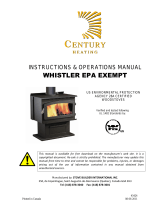
The extrusion process entails three main stages:
SHAPING, DRYING AND FIRING.
Four basic elements are involved:
CLAY, WATER, AIR AND FIRE.
• During the shaping stage, clay and water are combined using vacuum pressure to create a plastic mix.
The mix is then pushed through a nozzle to make tiles of variable thicknesses. This process is widely used
to make special tile pieces, like step tiles or swimming pool border tiles.
• Once the tiles have been shaped, hot air is used to remove the moisture content.
• Extruded tile is earth-friendly because it is fully recyclable and is composed of up to 45% recycled materials.
FACTS AND
ADVANTAGES
OF EXTRUDED TILE
Advantages:
• The extrusion process creates tiles with a more stable internal structure, which also makes them more water resistant.
These tiles are able to divert and release moisture from the substrate, or the surface on which the tile is installed, through
the grout joints.
• The tiles have a high mechanical resistance due to their structure, so when laid correctly they are extremely resistant to
frost, ice and thermal shock.
• In addition to the composition of the clays and glazes used to make them, the high-qualiy manufacturing process and
high firing temperatures lead to products with a high resistance to deep abrasion (unglazed tiles) and high resistance to
surface abrasion (glazed tiles).
• Certain shapes can be achieved which are impossible with conventional pressing systems.
• The extrusion process and technology that is used allows for the creation of complex shapes without any
reduction in the tiles’ resistance or technical properties.
-
 1
1
Ask a question and I''ll find the answer in the document
Finding information in a document is now easier with AI
Other documents
-
Alfresco 26-3011 User guide
-
Paragon Ceramic Kiln User manual
-
Unbranded 1135089 Specification
-
Mapei 5LA004952 User manual
-
 Drolet WHISTLER WOOD STOVE User manual
Drolet WHISTLER WOOD STOVE User manual
-
Paragon Home Artist-120 Instructions/Service Manual
-
ABOLOS HMDWTJHEX-CG-P User manual
-
Vortex VOLKI-625 Installation guide
-
Emac NL39012 User manual
-
 Drolet BALTIC WOOD STOVE User manual
Drolet BALTIC WOOD STOVE User manual


